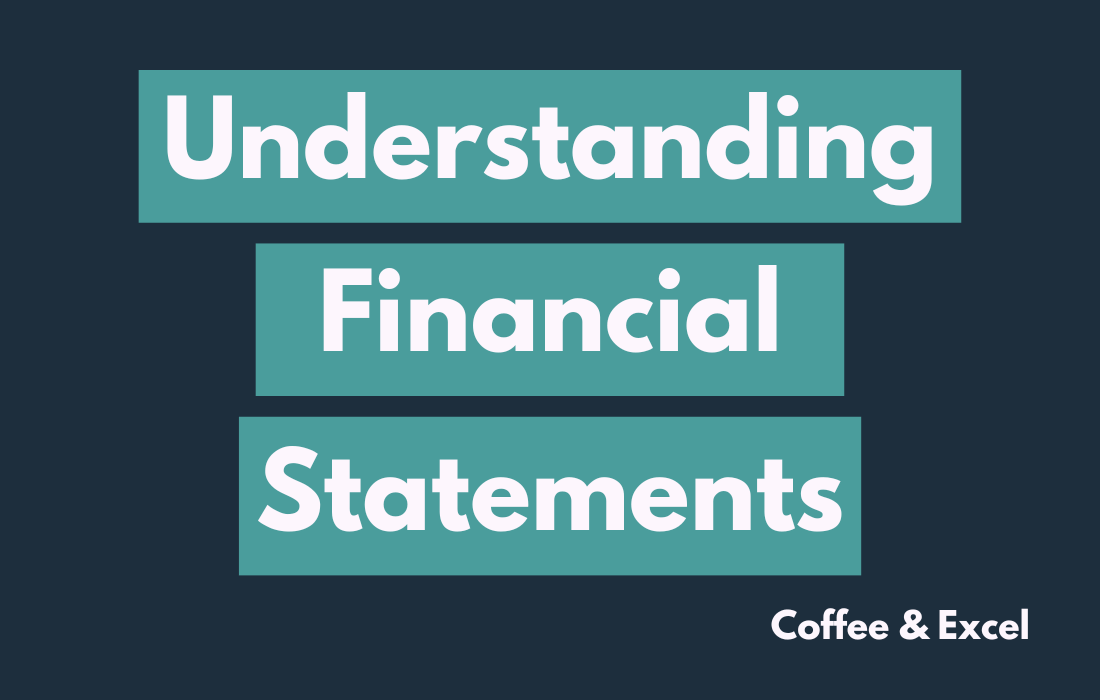Understanding Financial Statements: Empowering Non-Financial Professionals to Thrive

Introduction: The Power of Financial Statements
Why Every Professional Should Understand Financial Statements:
In today’s dynamic business landscape, the ability to interpret financial statements isn’t just a skill reserved for accountants or financial experts. In fact, professionals across various sectors are finding it increasingly beneficial to grasp the basics of these crucial documents. Whether you’re an entrepreneur, a manager, or even a freelancer, understanding financial statements can offer you a competitive edge.
The Bridge to Informed Decisions:
Financial statements serve as a bridge, connecting you to the heart of a business’s financial health. By delving into these statements, you can uncover insights about a company’s profitability, liquidity, and overall financial stability. Moreover, for those outside the finance realm, these insights can be transformative. They can guide investment decisions, shape business strategies, and even influence career choices.
Setting the Stage for Our Journey:
As we embark on this journey to demystify financial statements, we’ll start by exploring their significance. We’ll then transition into the core components that make up these statements, offering a clear and concise breakdown for those new to the subject. So, whether you’re a seasoned professional looking to expand your knowledge or a newbie eager to learn, this guide promises to be both enlightening and empowering.
Why Understanding Financial Statements is Important
Unlocking Business Insights:
At the heart of every thriving business lies a set of well-maintained financial statements. These aren’t just numbers on paper; they reflect a company’s past decisions, current health, and future potential. By decoding these numbers, you can unlock a treasure trove of business insights.
I never attempt to make money on the stock market. I buy on the assumption that they could close the market the next day and not reopen it for five years.
Warren Buffett
Guiding Business Strategy:
Firstly, financial statements act as a compass, guiding businesses toward sustainable growth. They highlight areas of strength, pinpoint weaknesses, and offer clues on where to invest resources. For instance, a consistent increase in revenue indicates a successful product or service, while mounting debts might signal the need for financial restructuring.
Facilitating Investment Decisions:
For investors, these statements are nothing short of a goldmine. They provide a snapshot of a company’s financial health, helping investors make informed decisions. A robust balance sheet, for example, often suggests a stable business with good growth potential. Conversely, a dwindling cash flow might raise red flags about a company’s sustainability.
Ensuring Accountability and Transparency:
In the modern business world, transparency isn’t just a buzzword; it’s a necessity. Stakeholders, be it investors, employees, or customers, demand accountability. Financial statements, being public documents, ensure that businesses remain transparent about their financial dealings, fostering trust and credibility.
Empowering Non-Financial Professionals:
Lastly, understanding these statements can be a game-changer for those outside the finance sector. It equips professionals with the knowledge to ask the right questions, challenge financial decisions, and contribute more effectively to strategic discussions.
In essence, financial statements are more than just columns of numbers. They’re a narrative, telling the story of a business’s journey, its challenges, and its triumphs. By understanding this narrative, you position yourself to make smarter decisions, whether you’re leading a business, investing in one, or simply aiming to broaden your professional horizons.
The Basics of Financial Statements
Diving into the Financial World:
Navigating the financial realm can seem daunting, but it becomes a breeze with a clear understanding of the foundational elements. Financial statements, often considered the backbone of financial analysis, offer a structured view of a company’s financial activities. Let’s delve deeper into these essential documents.
Balance Sheet: A Snapshot of Assets and Liabilities:
Often referred to as the ‘Statement of Financial Position’, the balance sheet provides a snapshot of a company’s assets, liabilities, and equity at a specific point in time. Think of it as a financial photograph, capturing what a company owns and owes. Assets showcase the resources, while liabilities highlight the obligations. The difference between the two represents the company’s equity or net worth.
Income Statement: Tracking Profitability:
Transitioning from assets and liabilities, the income statement, sometimes called the ‘Profit and Loss Statement’, paints a picture of a company’s financial performance over a period. It details revenues earned and expenses incurred, culminating in a net profit or loss. By analyzing this, businesses can gauge their operational efficiency and profitability trends.
Cash Flow Statement: Monitoring the Money Movement:
Cash is king in the business world. As the name suggests, the cash flow statement tracks the inflow and outflow of cash within a company. Broken down into operations, investing, and financing activities, it offers insights into how a company generates and spends its cash. A positive cash flow often indicates a healthy financial position, while negative trends might necessitate strategic interventions.
Statement of Equity: Understanding Ownership Dynamics:
Lastly, the statement of equity, or ‘Statement of Changes in Equity’, provides a comprehensive view of the changes in a company’s equity over time. It factors in aspects like issued shares, dividends, and retained earnings. For stakeholders, this statement sheds light on the company’s financial strategies and shareholder value creation.
Financial statements serve as a window into a company’s financial health and operations. By mastering the basics, you empower yourself with the tools to make informed decisions, contribute to strategic discussions, and confidently navigate the financial landscape.
Where to Find Financial Statements
The Quest for Authentic Financial Data:
In the age of information, accessing financial statements has become more straightforward than ever. However, the key lies in sourcing authentic and up-to-date data. Here’s a guide to help you navigate the vast ocean of information and pinpoint reliable financial statements.
Company Websites: Direct from the Source:
- Annual Reports: Most publicly traded companies publish annual reports on their official websites. These reports contain financial statements and offer insights into the company’s strategies, achievements, and future outlook.
- Investor Relations Section: This dedicated section on a company’s website is a goldmine for financial enthusiasts. It houses quarterly reports, earnings presentations, and other vital financial documents.
Regulatory Bodies: The Seal of Authenticity:
- U.S. Securities and Exchange Commission (SEC): For companies operating in the U.S., the SEC’s EDGAR database is an invaluable resource. Companies are mandated to file their financial statements here, ensuring authenticity and timeliness.
- Other Regulatory Authorities: Depending on the country, different regulatory bodies oversee the filing of financial statements. For instance, in the UK, it’s the Financial Conduct Authority (FCA), while in Canada, it’s the Canadian Securities Administrators (CSA).
Financial News Websites and Platforms:
- Bloomberg, Reuters, and Yahoo Finance: These platforms aggregate financial data from various sources, presenting them in user-friendly formats. They offer financial statements, along with news, analysis, and trends related to the company.
Specialized Financial Databases:
- Morningstar, FactSet, and S&P Capital IQ: These databases, often subscription-based, provide in-depth financial data, analytics, and research tools. Ideal for professionals and serious investors, they offer a comprehensive view of a company’s financial landscape.
While the internet offers a plethora of sources, it’s crucial to rely on reputable and official channels to access financial statements. By doing so, you ensure the accuracy of the data, allowing for informed analyses and decisions.
Understanding Financial Statements for Dummies
Demystifying Financial Jargon:
Embarking on the journey of understanding financial statements might seem like diving into a sea of jargon and numbers. However, this sea transforms into a clear, navigable river with the right approach. Let’s simplify these concepts with relatable examples.
Balance Sheet Simplified: Apple Inc.:
Imagine the balance sheet as a snapshot of a company’s financial health on a specific date. Taking Apple Inc. as an example, if you were to look at their annual report, you’d see a list of assets (things they own, like buildings and inventory), liabilities (debts they owe to others), and equity (the value left for shareholders). In essence, it answers the question: What does Apple own and owe?
Income Statement in Layman’s Terms: Starbucks:
Transitioning to the income statement, think of it as a diary that tracks money coming in and going out over a year. For instance, Starbucks’ income statement would show its total sales from coffee and snacks minus the costs (like coffee beans and employee wages). The result? Their annual profit or loss. In simpler terms, it answers: How much did Starbucks earn and spend?
Cash Flow Statement Unveiled: Tesla:
The cash flow statement, often overlooked, is crucial. Using Tesla as an example, this statement would show how much cash they received from selling cars and how much they spent on research or paying off loans. It’s a play-by-play of Tesla’s cash movements, answering: Where did Tesla’s money come from and where did it go?
Statement of Equity Decoded: Amazon:
Lastly, the statement of equity can be likened to a family’s financial diary. For a giant like Amazon, it would detail changes in ownership, like issuing new shares or paying dividends to shareholders. It clearly shows how Amazon’s financial decisions impact its shareholders.
Making Financial Statements Relatable:
In conclusion, financial statements aren’t as complex as they first appear. We can better grasp their significance and utility by relating them to real-world companies and breaking down their components. Remember, every number tells a story; with this understanding, you’re well-equipped to read and interpret these narratives.
What Can You Learn from Financial Statements?
Peeling Back the Financial Layers:
At first glance, financial statements might seem like a maze of numbers. However, when you start to peel back the layers, these numbers reveal compelling stories about a company’s health, strategies, and future prospects. Let’s uncover the insights these statements offer.
Know what you own, and know why you own it.
Peter Lynch
Gauging Financial Health: Profitability and Solvency:
One of the primary things you can discern from financial statements is a company’s financial health. For instance, by examining the income statement, you can determine if a company is profitable. Meanwhile, the balance sheet offers insights into solvency, answering questions like: Can the company meet its long-term obligations?
Identifying Growth Patterns and Trends:
Financial statements are like breadcrumbs, tracing a company’s journey. By analyzing consecutive statements, you can spot growth patterns. Is revenue steadily increasing? Are expenses being managed efficiently? These trends can forecast future performance, giving stakeholders a clearer picture of where the company might be headed.
Understanding Cash Management:
Cash flow is the lifeblood of any business. The cash flow statement, often under-appreciated, reveals how a company manages its cash. It shows where the money is coming from and where it’s being spent. Efficient cash management often indicates a company’s ability to sustain operations and invest in future growth.
Assessing Risk and Investment Potential:
For potential investors, financial statements are invaluable. They can help assess the risk associated with an investment. A company with high debts or inconsistent cash flows might be riskier than one with a strong balance sheet and steady revenues. By diving deep into these statements, investors can make more informed decisions.
Decoding Management Strategies:
Lastly, these statements can offer a glimpse into the minds of company management. How are they allocating resources? Are they investing in research and development or focusing on marketing? The choices reflected in the numbers can provide insights into a company’s strategic direction.
In essence, financial statements are a goldmine of information. They don’t just reflect past performance; they offer clues about future potential. By learning to interpret them, you equip yourself with a powerful tool, enabling smarter business and investment decisions.
Tips for Non-Financial Professionals
Navigating the Financial Landscape with Confidence:
For many non-financial professionals, diving into the world of financial statements can feel like venturing into uncharted territory. However, this journey can be enlightening and empowering with the right approach and mindset. Let’s explore some actionable tips to help you navigate with confidence.
In the short run, the market is a voting machine but in the long run, it is a weighing machine.
Benjamin Graham
Start with the Basics: Familiarize and Visualize:
Before diving deep, getting acquainted with the basic terminologies is crucial. Balance sheets, income statements, cash flows – each has its unique language. Visual aids, like charts and infographics, can be immensely helpful. Consider using apps or online platforms that transform raw data into visual representations, making it easier to grasp.
Ask Questions: The Power of Curiosity:
Never hesitate to ask questions. Whether it’s a term, you don’t understand or a trend that seems odd, seeking clarity is essential. Engaging with financial experts or colleagues can provide invaluable insights. Remember, every question you ask brings you one step closer to mastery.
Utilize Online Resources and Courses:
The digital age offers a plethora of resources. From online courses on platforms like Coursera or Udemy to financial blogs and YouTube tutorials, there’s a wealth of information at your fingertips. Dedicate some time each week to learn and stay updated.
Practice Makes Perfect: Regularly Review Statements:
The more you engage with financial statements, the more comfortable you’ll become. Make it a habit to review statements regularly, even if they’re not from your industry. Over time, you’ll start noticing patterns, trends, and anomalies, sharpening your analytical skills.
Stay Updated with Industry News:
Financial statements don’t exist in a vacuum. They’re influenced by industry trends, economic shifts, and global events. By staying updated with industry news, you’ll be better positioned to understand the context behind the numbers.
While financial statements might seem daunting initially, they become an open book with persistence and the right resources. As a non-financial professional, equipping yourself with this knowledge enhances your professional value and empowers you to make informed decisions in various aspects of your career.
Special Mention: Nonprofit Organizations
A Unique Financial Landscape:
While much of our discussion has revolved around for-profit entities, it’s essential to shine a spotlight on nonprofit organizations. These entities, driven by missions rather than profits, have a unique financial landscape. Yet, understanding their financial statements is equally crucial.
Why Financial Statements Matter for Nonprofits:
At the heart of every nonprofit lies a mission – be it supporting education, alleviating poverty, or promoting the arts. To achieve these goals, nonprofits rely on donations, grants, and other funding sources. Financial statements provide transparency, ensuring donors and stakeholders that funds are being used judiciously and effectively.
Statement of Activities: Beyond Profits and Losses:
Unlike traditional businesses, nonprofits don’t have an ‘income statement’. Instead, they present a ‘Statement of Activities’. This document showcases revenues (like donations and grants) and expenses, highlighting how funds are allocated. It offers insights into the organization’s financial efficiency in advancing its mission.
Statement of Financial Position: Assets and Obligations:
Similar to a balance sheet, nonprofits use the ‘Statement of Financial Position’. It details assets, liabilities, and net assets. This statement provides a snapshot of the organization’s financial health, ensuring that it has the resources to continue its mission-driven activities.
Functional Expense Statement: A Breakdown of Costs:
Unique to nonprofits, the Functional Expense Statement categorizes expenses based on program services and supporting activities. It clearly shows how much is spent directly on the mission versus administrative or fundraising efforts.
Reading Between the Lines: Impact and Efficiency:
For potential donors and stakeholders, these statements offer more than just numbers. They tell a story of impact and efficiency. A nonprofit that allocates significant funds directly to its mission showcases effectiveness, while high administrative costs might raise eyebrows.
Nonprofit financial statements, while distinct, play a pivotal role in ensuring transparency, building trust, and driving impact. By understanding these documents, stakeholders, donors, and even volunteers can better align their efforts, ensuring that every dollar makes a difference.
Conclusion: The Power of Financial Literacy
Decoding the Financial Narrative:
As we draw this exploration to a close, it’s evident that financial statements are more than just sheets filled with numbers. They’re narratives, intricately woven tales of a company’s journey, its challenges, successes, and aspirations. We unlock a world of insights, strategies, and opportunities by learning to decode these narratives.
Empowerment Through Knowledge:
For professionals, be it in finance or other sectors, understanding these statements is empowering. It equips you with the tools to make informed decisions, contribute meaningfully to discussions, and navigate the business landscape with heightened confidence. Moreover, this knowledge becomes indispensable in an age where transparency and accountability are paramount.
A Lifelong Learning Journey:
While this guide has provided a comprehensive overview, financial literacy is a lifelong journey. The financial world is dynamic, ever-evolving with new trends, regulations, and challenges. Staying updated, continuously learning, and seeking clarity will ensure that you remain ahead of the curve.
As we wrap up, we invite you to delve deeper, ask questions, and engage with the world of finance. Whether you’re a seasoned professional, a curious beginner, or someone in between, there’s always more to learn, more stories to uncover, and more narratives to decode.
Frequently Asked Questions (FAQ)
- What are the main types of financial statements? The primary financial statements include the Balance Sheet (or Statement of Financial Position), Income Statement (or Profit and Loss Statement), Cash Flow Statement, and Statement of Equity (or Statement of Changes in Equity).
- Why are financial statements important for non-financial professionals? Financial statements provide insights into a company’s financial health, performance, and strategies. For non-financial professionals, understanding these statements can aid in decision-making, strategic discussions, and overall business comprehension.
- How do the financial statements of nonprofit organizations differ from for-profit entities? Nonprofits use specific statements like the Statement of Activities and the Functional Expense Statement. While they share similarities with for-profit financial statements, they focus more on fund allocation, sources of revenue (like donations and grants), and mission-driven activities.
- How can I improve my understanding of financial statements? Start with the basics, utilize online resources, engage with financial experts, and make it a habit to review and analyze financial statements regularly. Continuous learning and practice are key.
- What can financial statements reveal about a company’s future? Analyzing trends, growth patterns, and financial health indicators in financial statements can forecast a company’s future performance, potential risks, and growth opportunities.
- Are financial statements sufficient to gauge a company’s overall health? While financial statements provide a comprehensive view of a company’s financial health, it’s also essential to consider other factors like market trends, industry news, and macroeconomic indicators for a holistic understanding.
- How often are financial statements typically released? Most companies release financial statements quarterly and annually. Quarterly statements provide a short-term view, while annual statements offer a comprehensive overview of the company’s performance over the year.





3 Comments